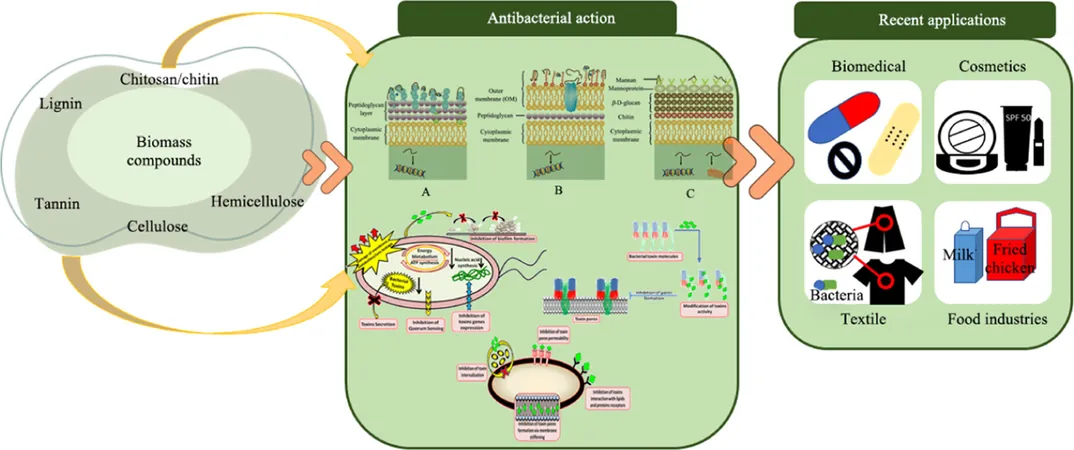
Paleontologists Uncover a New Long-Snouted Notosuchian Species in Brazil: A Gateway to the Lives of Ancient Reptiles!
2024-10-07
Author: Li
Introduction
In a groundbreaking discovery, paleontologists have identified a new genus and species of long-snouted notosuchian from fragmentary remains unearthed in Brazil's Adamantina Formation. Named *Epoidesuchus tavaresae*, this fascinating reptile roamed the ancient supercontinent Gondwana during the Late Cretaceous epoch, approximately 72 million years ago.
Physical Characteristics
Measuring about 4 meters (13 feet) in length, *Epoidesuchus tavaresae* sported a long, tubular snout that suggests it may have thrived in a semi-aquatic environment. This species is a part of the Peirosauridae family, which comprises a diverse group of crocodylomorphs within the suborder Notosuchia.
Research Insights
Dr. Juan Ruiz, the lead author of the study from FEIS-UNESP, highlighted the sheer diversity of the Notosuchia group, with over 80 species described so far, particularly flourishing in Cretaceous formations across Gondwana. "This taxonomic richness not only underscores their diversity but also indicates a range of ecological adaptations, including both terrestrial and semi-aquatic lifestyles," he noted.
Fossil Record
The fossil record of notosuchians is predominantly found in the Cretaceous deposits of Gondwanan landmasses such as Africa, Madagascar, and the Indian subcontinent. However, it was in South America during the Late Cretaceous that these creatures reached their peak diversity, as evidenced by the discovery of *Epoidesuchus tavaresae*.
Classification and Analysis
Originally classified in 1982, the Peirosauridae family has seen multiple species described in recent decades. Yet, researchers have observed that few studies have adequately considered peirosaurids in broader phylogenetic assessments. The recent study examined a fragmentary skull and a postcranial element of the new species, both of which were discovered in 2011 at an outcrop in Catanduva, Northwestern São Paulo state, Brazil.
Lineages and Diversity
"Our analysis provides compelling evidence of the Peirosauridae family's two distinct lineages: the oreinirostrine Peirosaurinae and the longirostrine Pepesuchinae," the researchers stated. Additionally, their morphospace analysis revealed that peirosaurids displayed substantial ecomorphological diversity, adapting to various ecological niches that may have been unoccupied by other notosuchians or neosuchians at the time.
Ecological Significance
Notably, the Pepesuchinae lineage was widespread in Africa and South America during the Cretaceous, distinguished by their longer snouts akin to modern generalist crocodilians such as *Crocodylus* and some caiman species. "In regions where semi-aquatic neosuchians were rare or absent, pepesuchines thrived—indicating they occupied essential ecological roles in the freshwater systems of Western Gondwana," the study suggests.
Conclusion
This remarkable discovery underlines not just the evolutionary journey of the Peirosauridae family but also enhances our understanding of ancient ecosystems, filling in gaps in the complex puzzle of prehistoric life.
Publication Details
The team's findings were published on August 29 in *The Anatomical Record*, adding a thrilling chapter to our knowledge about the diversity and adaptability of ancient reptiles.
Future Research
Stay tuned as we continue to uncover the untold stories of our planet's distant past!


 Brasil (PT)
Brasil (PT)
 Canada (EN)
Canada (EN)
 Chile (ES)
Chile (ES)
 España (ES)
España (ES)
 France (FR)
France (FR)
 Hong Kong (EN)
Hong Kong (EN)
 Italia (IT)
Italia (IT)
 日本 (JA)
日本 (JA)
 Magyarország (HU)
Magyarország (HU)
 Norge (NO)
Norge (NO)
 Polska (PL)
Polska (PL)
 Schweiz (DE)
Schweiz (DE)
 Singapore (EN)
Singapore (EN)
 Sverige (SV)
Sverige (SV)
 Suomi (FI)
Suomi (FI)
 Türkiye (TR)
Türkiye (TR)